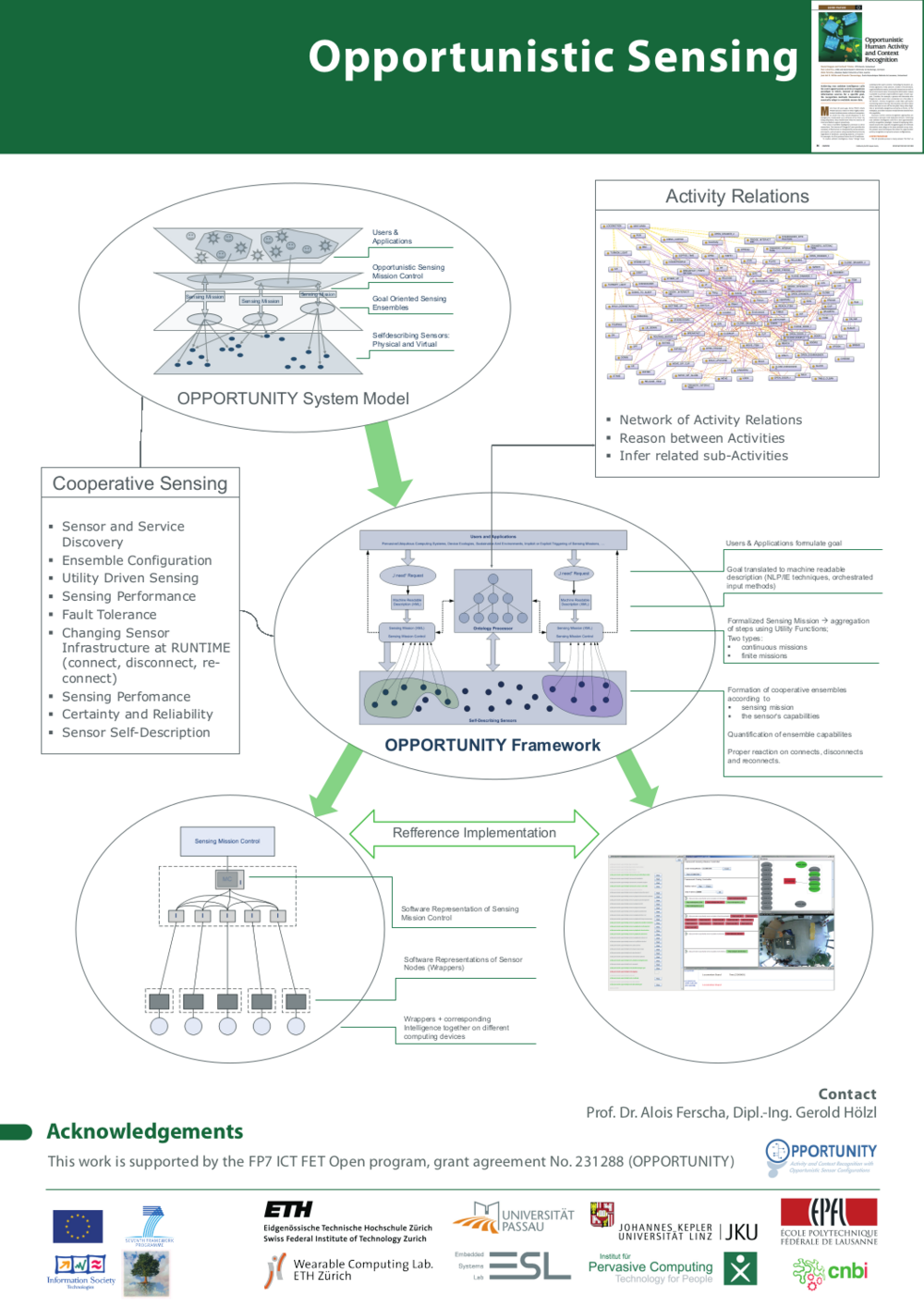| Funding | EU FP7-ICT-2007.8.0, CP; additional funding: bm:wf | ||
| Project no. | 225938 | ||
| Duration | 2009-2012 | ||
| Consortium | Eidgenössische Technische Hochschule Zürich*, Johannes Kepler Universität Linz, Ecole Polytechnique Fédérale de Lausanne, Universität Passau | ||
| Role | Proposer, Area Leader, Project Partner |

OPPORTUNITY picks up on the very essential methodological underpinnings of any Ambient Intelligence (AmI) scenario: recognizing (and understanding) context and activity.
Methodologies are missing to design context-aware systems: (1) working over long periods of time despite changes in sensing infrastructure (sensor failures, degradation); (2) providing the freedom to users to change wearable device placement; (3) that can be deployed without user-specific training. This limits the real-world deployment of AmI systems.
We develop opportunistic systems that recognize complex activities/contexts despite the absence of static assumptions about sensor availability and characteristics. They are based on goal-oriented sensor assemblies spontaneously arising and self-organizing to achieve a common activity/context recognition goal. They are embodied and situated, relying on self-supervised learning to achieve autonomous operation. They make best use of the available resources, and keep working despite-or improves thanks to-changes in the sensing environment. Changes include e.g., placement, modality, sensor parameters and can occur at runtime.
Four groups contribute to this goal. They develop: (1) intermediate features that reduce the impact of sensor parameter variability and isolate the recognition chain from sensor specificities; (2) classifier and classifier fusion methods suited for opportunistic systems, capable of incorporating new knowledge online, monitoring their own performance, and dynamically selecting most appropriate information sources; (3) unsupervised dynamic adaptation and autonomous evolution principles to cope with short term changes and long term trends in sensor infrastructure, (4) goal-oriented cooperative sensor ensembles to opportunistically collect data about the user and his environment in a scalable way.
The methods are demonstrated in complex opportunistic activity recognition scenarios, and on robust opportunistic EEG-based BCI systems.